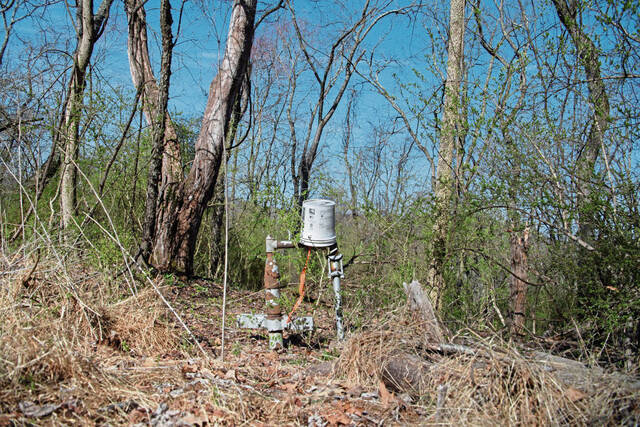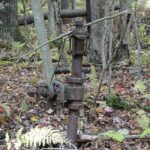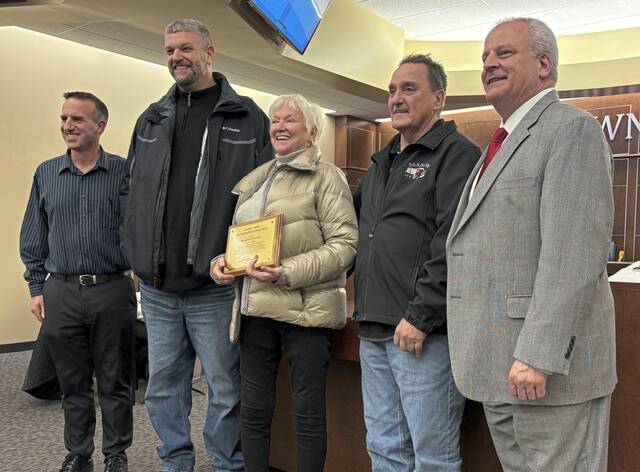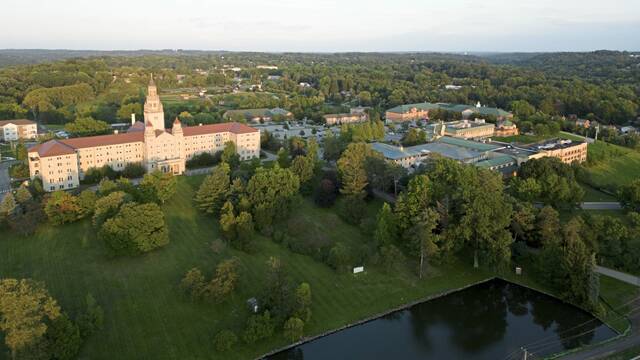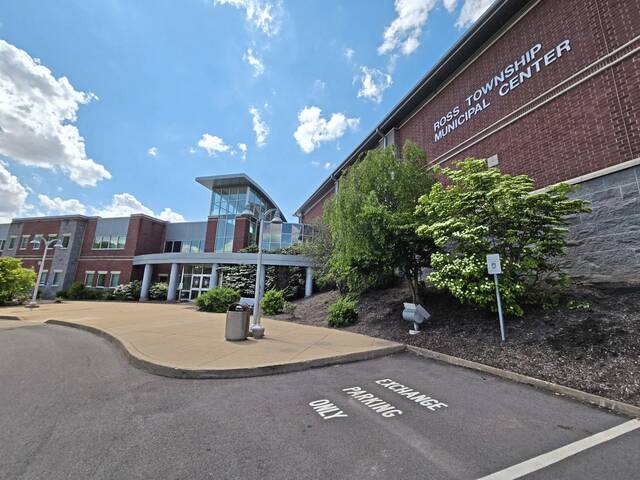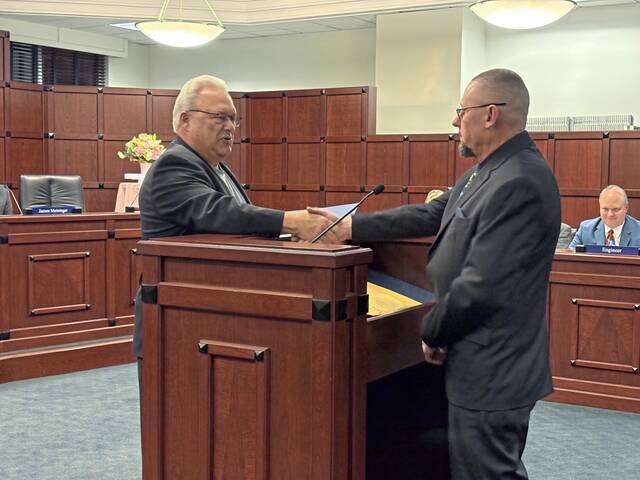An effort to find abandoned and orphaned oil and gas wells so that they can be plugged will make its way this summer to Ross and Shaler.
After metal-detecting drones found 250 such wells in eight square miles of rural Clarion and McKean counties last fall, the coalition of government agencies, environmental groups and universities wants to see how its well-finding technology works in urban and suburban areas, said Adam Peltz, director and senior attorney with the non-profit Environmental Defense Fund in New York City.
Ross and Shaler were chosen in consultation with the state Department of Environmental Protection because they are among six locations in Allegheny and Washington counties with cases of gas coming from unknown sources, Peltz said. The other locations to be surveyed are North Fayette and White Oak in Allegheny County, and South Strabane and Charleroi in Washington County.
“The theory is that the gas is coming from orphan wells,” Peltz said. “We are going to see if using our instruments we can find those wells so the DEP can get them plugged.”
Four open houses where residents can learn about the project are being held the week of July 14. One will be held from 6 p.m. to 9 p.m. July 15 at Synergy Lab at Hackers Guild, 2247 Babcock Blvd. in Ross.
“We just really hope people come out,” said Patrice Tomcik, of Adams in Butler County and a senior director with Moms Clean Air Force, one of the groups involved. “They should feel free to come and look at the equipment, ask questions, and get something to eat and drink. It’s a friendly, family atmosphere.”
But the subject is serious, because the methane and other harmful pollutants and toxic chemicals coming from leaking wells can contaminate the air, ground and water and be harmful to health.
“Pennsylvania has a long, extractive legacy and oil and gas has been around for a long time,” Tomcik said. “There are all of these orphaned wells that are around and some people know they’re there because there are signs of them leaking and others don’t know because they’re not aware of them because they can be hidden. This is a project that is really important to us to find these wells and plug them to protect communities.”
Ross Commissioner Dan DeMarco plans to attend the open house in his community.
“I think it’s a very good idea. I know the DEP is aware there’s abandoned wells in the area,” he said, adding that a resident in his ward was put out of his home for weeks because a well was found close to his house. “He had no choice. He had to get out of his house because of the danger of this well.
“It’s very important that they locate these abandoned wells.”
Pennsylvania has by far the most orphaned and abandoned wells in the nation. While 25,000 have been documented, it’s believed there are 300,000 to 700,000 that are not documented, meaning the state does not have records of where they are, Peltz said.
In Pennsylvania, wells are considered orphans if they were left behind by their owners before 1985 and are no longer in service. Abandoned wells are those that have not produced for a year and, while their equipment may have been removed, were never properly plugged.
In March, Gov. Josh Shapiro announced that the 300th orphaned or abandoned well — in North Franklin, Washington County — had been plugged under his administration.
“It’s great that the documented wells are getting plugged,” Peltz said. “There is this open question about the 300,000-plus undocumented orphan wells.”
The survey work covering most if not all of Ross and Shaler is expected to start as soon as late July and continue into September. Residents can expect to see vehicles equipped with methane-detecting instruments mounted to them, followed up by people walking on sidewalks with backpack magnetometers, which Peltz said can see under buildings looking for the metal casings of wells.
Drone flights will be in September and only over specific properties where authorities believe there is a good reason to fly a drone, Peltz said.
“Most residents will not even notice anything is happening,” he said. “We want everyone to be aware of what’s happening but we don’t want to bother anyone.”
Drones are expected to be flown over Ross Park Mall, where wells are believed to be located under the building, the parking lot or both, he said.
“These wells can end up almost anywhere,” Tomcik said. “It will be interesting to see where we can find them.”
After the survey work has identified suspected well locations, state inspectors will attempt to verify them. They’ll evaluate the hazards and risks of the wells and assign priority rankings for plugging.
“There is a backlog of tens of thousands of wells they already know about,” Peltz said. “Unless it’s a true emergency, they’re likely to sit in the queue at least a little while. It’s better to be known than completely unknown with no hope of getting plugged.”
With bipartisan support, funding to plug orphan and abandoned wells was included in the 2021 infrastructure act. Of the $4.7 billion, Pennsylvania’s share is $400 million. While it was part of federal funding frozen in January, it was unfrozen in March and money is flowing, Petlz said.
“Plugging wells remains a priority for this administration because the wells are found everywhere,” he said.
Plugging a well can cost from $30,000 to $40,000 up to more than $1 million.
“If we find something under the mall, it’s not going to be cheap,” Peltz said.
Finding and documenting the wells will make the state eligible for large-scale federal funding, with most of that money going into the local economy through paying the local companies and workers who will plug the wells, Peltz said.
In August 2024, Shapiro and the United Mine Workers of America announced a new program that will register and train apprentices to plug wells.
“Plugging at scale creates a lot of well-paying jobs,” he said. “We see this not just as a way to repair the geology and protect people but also to get people out working in well-paid jobs in their neighborhoods helping their communities.”



